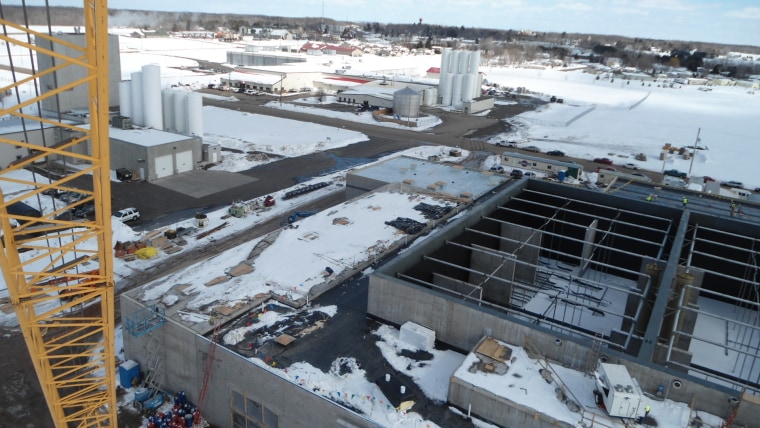Get a whiff of this: Milky rinse water flowing from Wisconsin cheese factories will soon be used to generate enough electricity for 3,000 homes, thanks to an innovative solution to a growing wastewater problem.
For years, the milky rinse water was spread on farmland as a low-grade fertilizer, but the practice was curtailed in the face of more stringent environmental regulations to limit runoff pollution, especially in the winter months when spraying on frozen ground was outlawed.
"We knew we had a problem because we can’t stop the ground from freezing," Tom Ludy, president and co-owner of GreenWhey Energy in Turtle Lake, Wis., told NBC News, noting that “Dairy plants run 7 days a week, 24 hours a day and cows produce milk on the same schedule.”
Ludy ran a dairy factory himself prior to his foray into the renewable energy business. He partnered with local wastewater haulers to raise financing and build a $28.5 million anaerobic digester facility. It is scheduled to begin operations this summer.
The facility will take milky rinse water from five local cheese factories and use anaerobic digesters to convert it into methane gas, which will be used to generate electricity. The leftover residue, in a solid state and thus with less environmental complications, will eventually be sold as fertilizer.
Heat from the electric generators will be captured and used to warm the building, preheat the milky residue and maintain the temperature of the anaerobic digester.
The wastewater will be piped to a municipal treatment plant and discharged. GreenWhey Energy hopes to eventually secure permits to discharge the water into the ground at their site.
"I wouldn’t say I would drink it, but it is close," Ludy said of the processed water’s quality. "I would definitely pump it in a lake and swim in the same lake, there is no doubt about that."
In theory, he added, the facility could treat the wastewater up to drinking quality, but the expense and securing the permits to do so, for now, aren't worth the hassle.
GreenWhey will charge the cheese factories a set fee in the neighborhood of three cents a gallon to take their wastewater. The company has also signed a contract with Xcel Energy, a utility, for the generated electricity.
By taking in money on both ends of the operation, the company, in time, should be able to generate a profit, which, after all, is the goal.
"The problem with people in this country is they think renewable energy should be free," Ludy said. "Well it's not. The fact of the matter is, it is renewable. And we just keep making it and making it and making it, which is great, but still, on the other hand it is not free."
In other words, renewable energy, like non-renewable energy, costs money to make. But, if done effectively, it can help businesses grow, address environmental concerns, and generate an income for the stakeholders. And that's whey, er, way cool.
John Roach is a contributing writer for NBC News. To learn more about him, check out his website.
